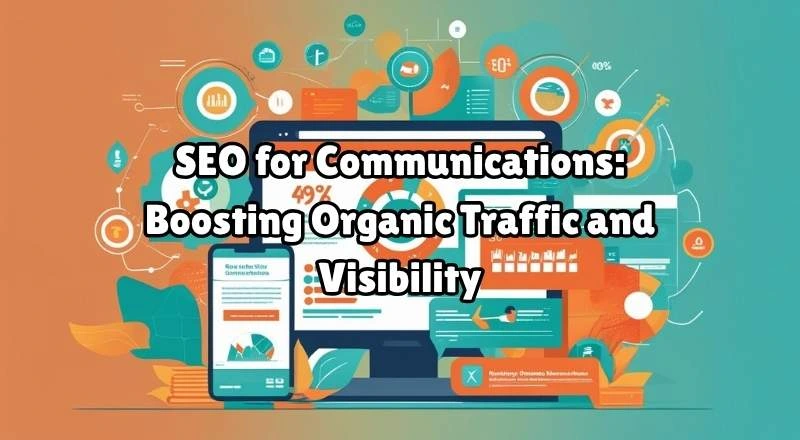- What is SEO?
- Why is SEO Crucial for Communications?
- The Unique Intersection of SEO and Communications
- Understanding audience intent and search behaviour in communication:
- Keyword Research & Strategy
- On-Page SEO for Communicators:
- Optimizing Content for Keywords: Speaking the Language of Search Engines
- Readability & User Experience (UX): Optimizing for Human Consumption
- Strategic Link Building Tactics
- Brand Mentions & Reputation Management
- Technical SEO Considerations for Communications Websites
- Site Speed & Performance
- Mobile-Friendliness
- Security (HTTPS)
- Schema Markup (Structured Data)
- Crawlability & Indexability
- Robots.txt File, Noindex Tags:
- Measuring & Analyzing SEO Performance
- Future Trends in SEO for Communications
- Conclusion:
What is SEO?
At its core, SEO, or search engine optimization, is a multifaceted digital marketing discipline focused on improving a website’s visibility in unpaid (organic) search engine results. The primary objective is to enhance both the volume and caliber of organic search engine traffic directed to your website. This means not just attracting more visitors but attracting the right visitors.
Key Components of a Comprehensive SEO Strategy:
SEO isn’t just one tactic; it’s a strategic blend of multiple techniques. It can be broadly categorized into three fundamental pillars:
On-Page SEO:

This refers to all the optimization efforts performed directly on your website and its pages to make them more appealing to search engines and users alike. This includes:
- Keyword Research and Integration: Identifying relevant keywords and phrases that your target audience uses to search for information and strategically incorporating them into your content, headings, and meta descriptions.
- High-Quality Content Creation: Producing valuable, informative, and engaging content that addresses user queries and provides a positive user experience.

- HTML Optimization: Optimizing elements within the HTML source code, such as title tags, meta descriptions, header tags (H1, H2, etc.), and image alt text, to provide clear signals to search engines about your content’s relevance.
- Internal Linking: Creating a logical and user-friendly internal link structure that helps search engines discover and index all your content and guides users through your website.
- URL Structure: Crafting clean, descriptive, and keyword-rich URLs that are easy for both users and search engines to understand.
Technical SEO:

To ensure your website performs at its best, technical SEO is crucial. It helps search engine bots effectively crawl, index, and rank your content. By focusing on the technical aspects of your site, you improve its accessibility and comprehensibility for search engines. Essential elements of technical SEO include:
- Website Speed and Performance: Ensuring your website loads quickly across all devices. A slow loading time can negatively impact user experience and search rankings.
- Mobile-Friendliness (Responsive Design): Designing your website to adapt seamlessly to various screen sizes and devices (smartphones, tablets, desktops) is paramount, especially with Google’s mobile-first indexing.
- Crawlability and Indexability: Using sitemaps and robots.txt files and addressing crawl errors. To ensure that search engines can easily discover and index all relevant pages on your website.
- Site Architecture and Navigation: Creating a clear, logical, and user-friendly website structure that allows both users and search engines to navigate and understand your content hierarchy.
- HTTPS Security: Implementing an SSL certificate ensures secure communication between your website and users, which is a Google ranking signal.
- Schema Markup: To improve search engine understanding of your website’s content and potentially enable rich snippets in search results, integrate structured data into your HTML.
Addressing these three core components helps businesses improve organic search visibility, attract qualified traffic, and achieve online marketing goals. SEO is a continuous process that demands constant monitoring, analysis, and adaptation to changes in search engine algorithms and user behaviour.
Why is SEO Crucial for Communications?
In today’s digital-first landscape, where information overload is a constant, search engine optimisation (SEO) isn’t just a technical detail for IT departments; it’s a fundamental pillar of effective communication strategies. Its importance stems from several key benefits that directly impact an organisation’s reach, influence, and ultimately, its success:
Increased brand awareness and authority: When your content consistently ranks high in search results for relevant keywords, your brand gains visibility. Repeated exposure helps your target audience become familiar with and recognise your brand. Moreover, high rankings signal to users (and to search engines) that your content is authoritative and trustworthy, establishing your brand as a leader in its field. This increased authority directly enhances credibility and strengthens brand reputation.
Higher organic traffic leads to more engaged audiences: Organic traffic, meaning visitors who find your site through search engines. Is invaluable because these users are actively seeking information related to your offerings. Unlike paid advertisements, organic search visitors are often further along in their discovery. (or) decision-making process, making them more likely to be genuinely interested in your content, products, or services. This higher intent translates into more engaged audiences who spend more time on your site, explore more pages, and are more receptive to your messaging.
Improved lead generation and conversions: By attracting highly targeted organic traffic, SEO directly contributes to lead generation. When potential customers or clients find your well-optimised content that addresses their needs or pain points, they are more inclined to take the next step. Whether it’s signing up for a newsletter, completing a purchase, or filling out a reference form. Effective SEO funnels qualified leads to your digital assets, significantly boosting conversion rates.
Cost-effective long-term marketing strategy:
While initial SEO efforts require investment in time and resources, the long-term returns make it an incredibly cost-effective strategy. Once your content is optimised and ranking, it continues to attract traffic and generate leads without the ongoing per-click costs associated with paid advertising. This sustained visibility provides a continuous flow of interested users, making SEO a highly sustainable and efficient marketing approach.

Enhanced credibility and trust with your target audience: People inherently trust search engines to provide accurate and relevant information. When your brand appears prominently in search results, it inherits a degree of that trust. Users perceive high-ranking sites as more reliable and credible sources. This enhanced credibility fosters trust with your target audience, making them more likely to engage with your content, believe your messages, and ultimately choose your brand over competitors.
The Unique Intersection of SEO and Communications
The synergy between SEO and communications is not merely about optimising keywords; it’s about deeply understanding how people seek and consume information and then crafting messages that resonate, inform, and persuade. This unique intersection highlights several critical areas:

Focus on storytelling and content quality: In communication, compelling narratives and high-quality content are paramount. In SEO, the saying “content is king” still holds, but it’s the quality of the content that ultimately makes the difference. This means crafting well-researched, insightful, and engaging stories that not only provide value to the reader but also naturally incorporate relevant keywords. Search engines are increasingly sophisticated at discerning quality, rewarding content that genuinely addresses user intent rather than simply stuffing keywords.
Importance of clear, concise, and shareable messages: Effective communication is about clarity and impact. For SEO, content should be easily readable, understandable, and digestible. Long, rambling sentences or overly complex jargon can deter readers and negatively impact engagement metrics, which search engines consider. Furthermore, clear and concise messages are inherently more shareable across social media and other platforms, extending their reach and generating valuable backlinks.
Leveraging PR and media relations for backlinks: Public relations (PR) and media relations are traditional communication tools that have a powerful, often overlooked, impact on SEO. Securing media mentions, press coverage, and interviews generates high-quality backlinks from authoritative news sites and industry publications.
Backlinks are crucial for search engine rankings, as they highlight your website’s relevance and authority. Combining PR strategies with SEO can significantly enhance your domain authority and elevate your search rankings.
Understanding audience intent and search behaviour in communication:
Effective communication and SEO hinge on audience understanding. In communication, tailor messages to demographics; in SEO, analyse search queries for intent. Aligning content with audience search behaviour ensures messages reach those who need them precisely when they’re searching.
Keyword Research & Strategy
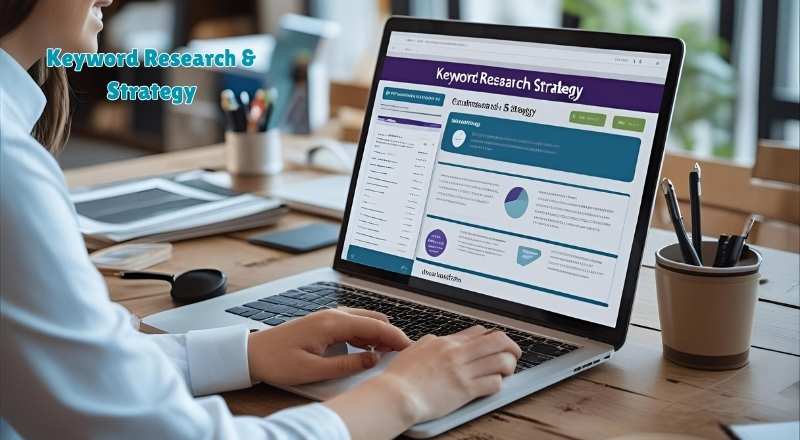
Effective SEO for communications begins with robust keyword research and strategy. This foundational step ensures that your content is discoverable by your target audience when they are actively searching for information, solutions, or products/services that you offer.
Audience and Search Intent: A Deep Dive
Before diving into keyword identification, it’s crucial to thoroughly understand the people you’re trying to reach. This involves answering several key questions:
Who are you trying to reach? Define your ideal customer or audience persona. Consider their demographics, psychographics, professional roles, and the challenges they face.
What problems are they trying to solve? Identify the pain points, questions, and needs that drive their online searches. Are they searching for information, a certain product, or a specific service?
What questions are they asking? Move beyond general keywords and anticipate the specific questions your audience might pose in a search engine. This method allows you to produce content that specifically answers their questions.
User Search Intent Types:
- Informational: Seeking information.
- Navigational: Trying to visit a specific website or webpage.
- Transactional: Aiming to complete an action (e.g., purchase, download).
- Commercial Investigation: Looking into options before deciding on a purchase.
Understanding search intent is paramount.
- Informational intent: Users are seeking knowledge (e.g., “how to fix a leaky faucet,” “history of artificial intelligence”). Your content should provide comprehensive, unbiased information.
- Navigational intent: Users are looking for a specific website or page (e.g., “Google Maps,” “Amazon login”). While less relevant for broad keyword strategy, it’s crucial for branded searches.
- Transactional intent: Users are ready to make a purchase or complete an action (e.g., “buy running shoes online,” “subscribe to newsletter”). Your content should facilitate this conversion.
- Commercial investigation intent: Users are researching before making a purchase, comparing products or services (e.g., “best laptops for graphic design,” “CRM software reviews”). Your content should offer detailed comparisons and pros/cons.
Identifying Relevant Keywords:
After understanding your audience and their intent, you can start identifying keywords that match their search queries.
Short-tail vs. Long-tail keywords:
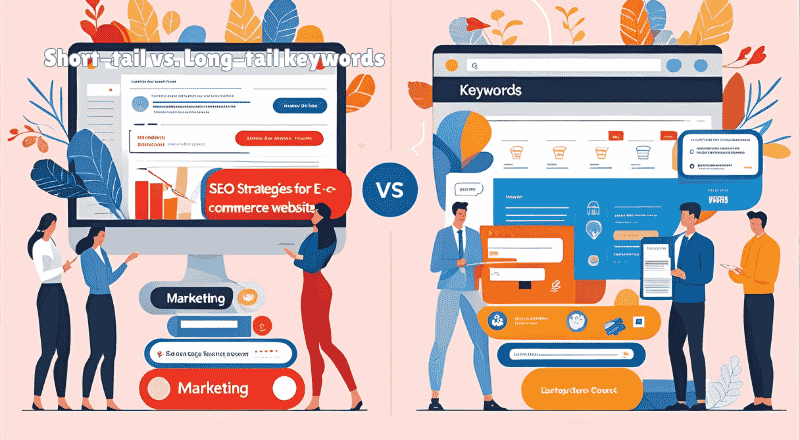
Head phrases, also known as short-tail keywords, are broad and general terms like “marketing” or “SEO.”
- Pros: When ranked effectively, high search volume can drive significant traffic.
- Cons: Highly competitive, difficult to rank for, less specific intent, may attract irrelevant traffic.
Long-tail keywords are more specific, multi-word phrases (e.g., “best SEO strategies for small businesses,” “how to do keyword research for content marketing”).
Pros:
- Lower Competition: Niche markets often have less competition, making it easier for businesses to differentiate themselves.
- Higher Conversion Rates: Customers in niche markets have a clearer intent to purchase, leading to increased conversion rates.
- Easier to Rank: With less competition, it becomes simpler to achieve higher search engine rankings.
- Cons: Lower individual search volume, requires more specific content creation.
- Strategy: A balanced approach is often best, targeting a mix of short-tail for broad visibility and long-tail for targeted conversions.
Branded vs. Non-branded keywords:
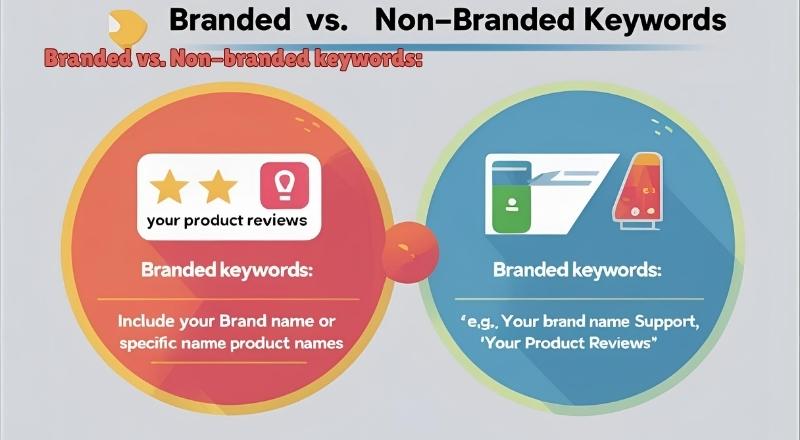
Branded keywords: Include your brand name or specific product names (e.g., “your brand name support,” “your product reviews”).
- Pros: Protects your brand identity, high conversion rates for existing customers or those aware of your brand.
- Cons: Limited in terms of new audience reach.
- Non-branded keywords: Do not include your brand name and focus on industry terms, problems, or solutions (e.g., “digital marketing tips,” “CRM software for startups”).
- Pros: It expands your reach to new audiences while strengthening both brand recognition and credibility.
- Cons: More competitive, requires significant SEO effort.
- Strategy: While defending branded searches is crucial, the majority of your keyword strategy should focus on non-branded terms to attract new leads.
- Competitor analysis: Analyzing what keywords your competitors are ranking for can provide invaluable insights. This involves:
Identifying your top competitors in organic search.
Using SEO tools to see which keywords they rank for, their top-performing content, and their estimated traffic.
Capitalizing on identified gaps in their keyword strategy.
Learning from their successes and failures.
- Seasonal and trending keywords: Capitalizing on current events and popular topics can drive significant, timely traffic.
- Seasonal keywords: Relate to specific times of the year (e.g., “holiday gift ideas,” “tax season tips”).
- Trending keywords: Emerge due to current news, pop culture, or breaking events (e.g., “AI ethics,” “sustainable fashion”).
- Strategy: Stay updated on current events, use trend analysis tools, and be agile in creating content that addresses these timely topics.
Keyword Research Tools:
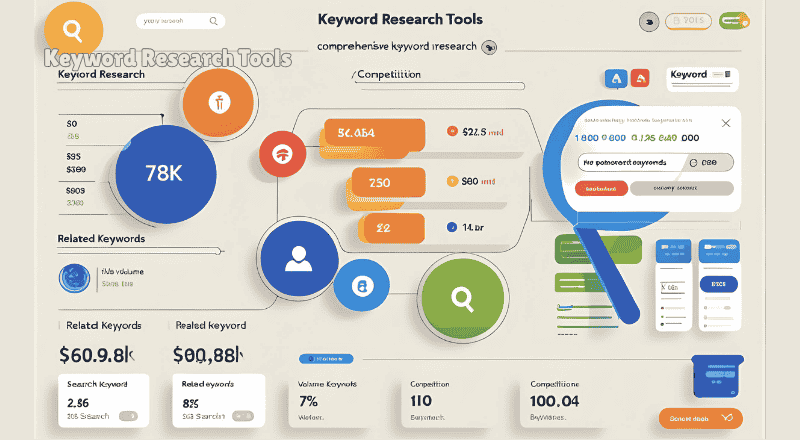
A variety of tools can assist in comprehensive keyword research, offering data on search volume, competition, related keywords, and more.
- Google Keyword Planner: A free tool provided by Google, essential for understanding search volume and competition within Google’s ecosystem.
- Semrush: A comprehensive all-in-one SEO platform offering extensive keyword research, competitor analysis, site audit, and more.
- Ahrefs: Another leading SEO tool renowned for its robust backlink analysis, keyword research, and content gap analysis features.
- Moz Keyword Explorer: Provides keyword suggestions, difficulty scores, and SERP (Search Engine Results Page) analysis.
- Ubersuggest: A freemium tool by Neil Patel offering keyword ideas, content ideas, and basic competitor insights.
Keyword Mapping & Content Planning:
The last step in developing a keyword strategy is incorporating your findings into your content plan.
Assigning keywords to specific pages and content pieces: Avoid keyword cannibalization (where multiple pages target the same keyword). Every page or piece of content should focus on a primary target keyword, supported by secondary keywords. This creates a clear focus for each piece of content.
- Creating content clusters around core topics: Instead of isolated pieces of content, think in terms of content clusters. This involves:
- Pillar content: A comprehensive, authoritative piece of content on a broad topic (e.g., “The Ultimate Guide to Digital Marketing”).
- Cluster content: Multiple, more specific pieces of content that delve into subtopics related to the pillar content, internally linking back to the pillar page (e.g., “Email Marketing Best Practices,” “SEO for Small Businesses,” “Social Media Strategy”).
- Benefits: This structure signals to search engines your authority on a particular topic, improves user experience, and helps with internal linking, ultimately boosting SEO performance.
On-Page SEO for Communicators:
 Effective on-page SEO is crucial for communicators to ensure their messages reach the widest possible audience and resonate deeply. It’s about optimizing every element on a webpage to not only attract search engines but also to provide an exceptional user experience.
Effective on-page SEO is crucial for communicators to ensure their messages reach the widest possible audience and resonate deeply. It’s about optimizing every element on a webpage to not only attract search engines but also to provide an exceptional user experience.
High-Quality Content Creation: The Cornerstone of On-Page SEO
At the heart of any successful SEO strategy lies the creation of high-quality content. This isn’t just about writing; it’s about crafting valuable, engaging, and relevant information that addresses the needs and interests of your target audience.
Value-Driven Content: The primary purpose of your content should be to provide solutions, answer questions, or satisfy a specific information need. This means understanding your audience’s pain points and offering clear, actionable insights or comprehensive explanations. Content that offers genuine value builds trust and positions you as an authority.
Engaging and Shareable Content: Beyond just being informative, your content needs to be engaging to hold attention and encourage dissemination. This can take many forms:

- Stories: Human-centric narratives resonate deeply and make complex information more accessible and memorable.
- Infographics: Visual representations of data and information are highly shareable and can simplify complex topics.
- Videos: Dynamic and versatile, videos can convey messages powerfully and are increasingly preferred by users.
Interactive Elements: Quizzes, polls, calculators, and interactive maps can boost user engagement and time spent on page.
Freshness and Evergreen Content:
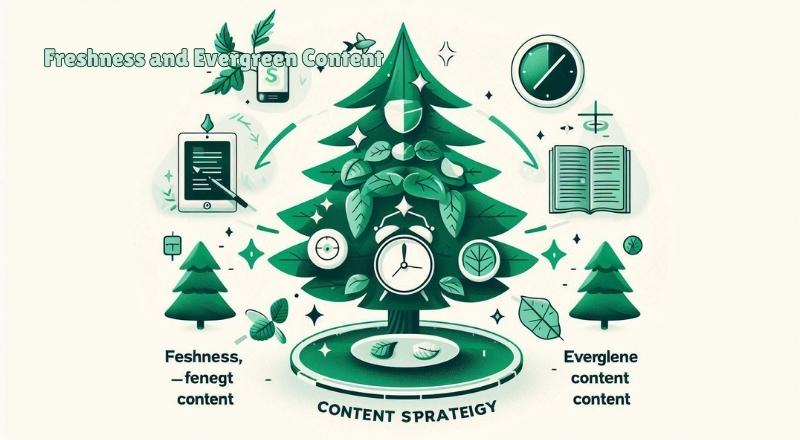
A balanced content strategy includes both timely, fresh content and evergreen pieces.
- Freshness: Regularly updating existing content with new information, statistics, or perspectives keeps it relevant for both users and search engines. Producing fresh content on trending subjects can also boost traffic.
- Evergreen Content: These are timeless pieces that remain relevant over an extended period, continuously drawing organic traffic. Examples include how-to guides, definitive explanations of concepts, or foundational articles.
- Content Length and Depth: While there’s no magic number for content length, the ideal balance lies in being comprehensive without being verbose.
- Conciseness: Be direct and eliminate superfluous content. Users often scan content, so clear and direct language is essential.
Comprehensiveness: For complex topics, ensure your content covers all necessary aspects to provide a complete understanding. Longer, in-depth articles often rank better for competitive keywords as they are perceived as more authoritative by search engines.
Optimizing Content for Keywords: Speaking the Language of Search Engines

Once you have high-quality content, the next step is to strategically integrate keywords to help search engines understand your content’s relevance.
Title Tags: The title tag is a crucial on-page SEO element. It needs to be compelling to attract clicks from search results and should incorporate your primary keyword(s) early on. It should accurately reflect the content of the page.
- Meta Descriptions: While not a direct ranking factor, a well-crafted meta description acts as an enticing snippet that appears under your title tag in search results. It should concisely summarize the page’s content, incorporate relevant keywords, and entice users to click.
- Header Tags (H1, H2, H3, etc.): Header tags serve a dual purpose: they structure your content for readability and signal to search engines the hierarchy and importance of different sections.
- H1 (Heading 1): Typically used for the main title of the page, containing the primary keyword. Each page must contain a single H1 heading.
- H2, H3, etc: Used for subheadings to break up content, improve readability, and incorporate secondary keywords or related phrases.
URL Structure:
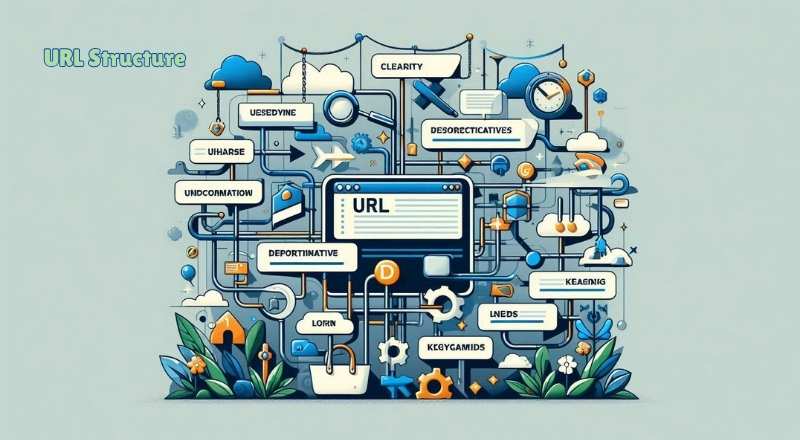
An optimized URL structure, characterized by clarity, descriptiveness, and keyword integration, offers advantages for both users and search engines. Keep URLs concise, using hyphens to separate words. Ideally, they should also contain relevant keywords. Avoid long, confusing strings of characters.
Image Optimization: Images enhance user experience, but they also offer SEO opportunities.

- Alt Text (Alternative Text): Provides a textual description of an image for visually impaired users and search engine crawlers. Images should be described accurately, incorporating relevant keywords where appropriate.
- File Names: Use descriptive file names with keywords before uploading images (e.g., `on-page-seo-strategies.jpg` instead of `IMG001.jpg`).
- Compression: Optimize image file sizes to ensure fast loading times without compromising quality. Significant page slowdowns can be caused by large images.
Internal Linking: This involves creating hyperlinks from one page on your website to another. Internal links help:

- Guide Users: They help users navigate your site and discover related content, improving engagement and reducing bounce rates.
- Guide Search Engines: They help search engine crawlers understand the structure of your site, distribute “link equity” (ranking power) across your pages, and discover new content. Strategically linking to important pages can boost their visibility.
Readability & User Experience (UX): Optimizing for Human Consumption

SEO focuses on creating a superior user experience, not just satisfying algorithms. A positive user experience signals to search engines that your content is valuable, which can lead to higher rankings.
Clear and Concise Language: Avoid jargon, overly complex sentences, and unnecessary technical terms. Craft your writing to be readily comprehensible to your intended readers. Explain any necessary technical terms.
Paragraph Breaks and White Space: Large blocks of text can be intimidating and difficult to read. Break up your content into shorter paragraphs. Utilize ample white space around text and images to make the page visually appealing and less overwhelming.
Use of Bullet Points and Numbered Lists: These formatting elements significantly improve content scanability. They allow users to quickly grasp key information and identify important points without having to read every single word.
Mobile Responsiveness: With the majority of internet traffic coming from mobile devices, a responsive website design is no longer optional; it’s essential. Your website and its content must adapt seamlessly to different screen sizes, ensuring a consistent and optimal viewing experience across all devices. Google also uses mobile-first indexing, meaning it primarily uses the mobile version of your content for indexing and ranking.
Fast Loading Times: Page speed plays a key role in keeping users engaged and improving search engine rankings. People expect fast-loading pages, and if a site takes too long, it can result in high bounce rates. Optimize images, leverage browser caching, minimize CSS and JavaScript, and use a reliable hosting provider to ensure your pages load swiftly.
Strategic Link Building Tactics

Acquiring high-quality backlinks requires a strategic and multifaceted approach.
Media Outreach & PR: Proactively engaging journalists, editors, and media outlets to secure coverage and backlinks boosts your communications website’s credibility and visibility through features in reputable news and industry publications. Crafting compelling press releases, expert commentary, and engaging stories increases media pickup chances.
Guest Posting: Contributing original, valuable content to other relevant websites in your industry is an effective way to earn backlinks. When noting a guest post, it’s usual to add a link to your website, either in the author bio or within the range itself. This tactic not only provides a link but also positions you as an expert in your field, expanding your reach to new audiences.
Broken Link Building: This approach involves identifying broken links on other websites and offering your relevant content as a replacement. Tools can help you find broken links on industry-leading sites. By offering a valuable solution to a problem (a broken link), you provide an incentive for the website owner to link to your content.
Content Promotion and Distribution:
Creating excellent content is only half the battle; promoting it effectively is crucial for earning links. Actively sharing your content across various platforms, including industry forums, online communities, and content aggregators, increases its visibility and the likelihood of others linking to it. Engaging with your audience and encouraging them to share your content further amplifies its reach.
Social Media Engagement: Social media isn’t a direct ranking factor, but a strong presence boosts exposure, leading to links from journalists, bloggers, and influencers. It also builds community and loyalty, fostering organic mentions and shares.
Partnerships and Collaborations: Forming strategic alliances with other businesses, organizations, or influencers in your niche can lead to mutually beneficial link-building opportunities. This can involve co-creating content such as webinars, e-books, or research papers, and then cross-promoting each other’s websites. Such collaborations not only generate backlinks but also expand your network and reach.
Brand Mentions & Reputation Management
Managing your brand’s online presence and reputation is an essential part of off-page SEO, going beyond just building direct backlinks.
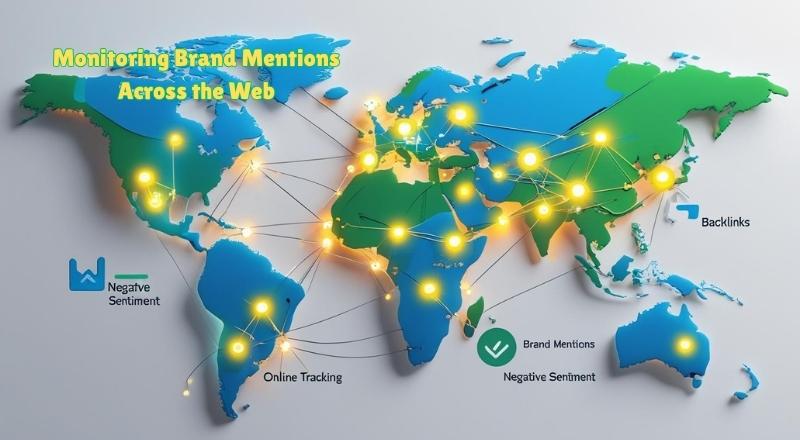
Monitoring Brand Mentions Across the Web: Regularly tracking where your brand is mentioned online, even without a direct link, allows you to identify opportunities to convert unlinked mentions into backlinks or to address any negative sentiment promptly. Brand monitoring tools are great for tracking mentions and staying informed.
Responding to Reviews and Comments: Actively engaging with reviews and comments on platforms like Google My Business, industry-specific review sites, and social media demonstrates excellent customer service and builds trust. Positive interactions can encourage more organic mentions and potentially lead to natural links.
Building a Positive Online Reputation: A strong, positive online reputation is fundamental for long-term SEO success. This involves consistently delivering high-quality content and services, fostering positive customer experiences, and addressing any negative feedback constructively. A positive reputation naturally attracts more mentions, shares, and backlinks over time.
Technical SEO Considerations for Communications Websites
Technical SEO is all about fine-tuning your website’s design so search engines can easily crawl, index, and comprehend your content. For communications websites, a robust technical foundation is essential for maximizing visibility and reach
Website Structure & Navigation.
Having a well-structured website is key to providing a great user experience and making it easier for search engines to navigate.
- Logical Hierarchy and Easy-to-Use Menus: Your website needs a clear and simple hierarchy so users and search engine bots can easily find their way through your content. Categories and subcategories should be logically structured, and menus should be simple, descriptive, and easily accessible from any page. A flat site structure where important content is only a few clicks from the homepage is generally preferred.
- Clear Sitemaps (XML and HTML): An XML sitemap serves as a guide for search engine crawlers, highlighting all the key pages on your website and making it easier for search engines to find and index your content effectively. An HTML sitemap, on the other hand, is designed for users, providing a structured overview of your site’s content, which can also aid in internal linking.
Site Speed & Performance
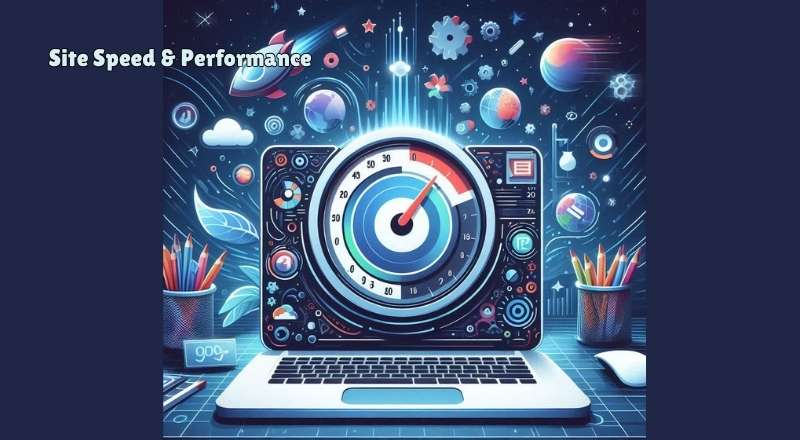
Website loading speed plays a key role in rankings and greatly affects user experience. Slow-loading sites often result in higher bounce rates and lower positions in search results.
- Optimizing images and videos: Is crucial since large files are often the main reason for slow loading times. Compressing their size without losing quality, choosing the right file formats like WebP for images, and using lazy loading to load media only when it’s in the user’s viewport can significantly boost performance.
- Leveraging Caching and Content Delivery Networks (CDNs): Caching stores static versions of your website content, allowing it to load faster for repeat visitors. CDNs distribute your website’s content across multiple servers globally, delivering it from the server closest to the user, thereby reducing latency and improving loading speeds for a diverse audience.
- Minifying CSS and JavaScript: Minification involves removing unnecessary characters (like whitespace and comments) from your website’s CSS and JavaScript files without altering their functionality. This helps decrease the file size, resulting in quicker loading times.
Mobile-Friendliness

As mobile browsing continues to grow, having a mobile-friendly website has become essential rather than just an option.
Responsive Design is Paramount: A responsive design ensures that your website adapts and displays optimally across various screen sizes and devices, from desktops to tablets and smartphones. Google emphasizes mobile-first indexing, meaning it mainly evaluates the mobile version of your website when determining its rankings. Therefore, a seamless mobile experience is crucial for organic visibility.
Security (HTTPS)
Making sure your website is secure is key to gaining trust and boosting SEO.
- Crucial for User Trust and SEO: HTTPS (Hypertext Transfer Protocol Secure) encrypts communication between a user’s browser and your website, protecting sensitive information. Google has long confirmed HTTPS as a ranking signal, and browsers increasingly flag non-HTTPS sites as “not secure,” deterring users and negatively impacting your brand’s credibility. Implementing an SSL certificate is essential.
Schema Markup (Structured Data)

Schema markup, or structured data, makes it easier for search engines to interpret the context and details of your web pages.
- Helping Search Engines Understand Your Content Better for Rich Snippets: By adding specific code (schema markup) to your HTML, you provide search engines with explicit clues about the meaning of your content. This can lead to your website appearing in rich snippets, which are enhanced search results that display more information, such as ratings, images, or frequently asked questions, directly on the search results page.
e.g., Organization Schema, Article Schema, FAQ Schema: For a communications website, relevant schema types might include:
- Organization Schema: Provides information about your organization (name, logo, contact info, social profiles), helping search engines understand your entity.
- Article Schema: Defines content as an article, blog post, or news piece, allowing search engines to display publication dates, authors, and other relevant details in search results.
- FAQ Schema: Allows you to mark up frequently asked questions and their answers, which can then be displayed directly in the search results as a clickable accordion, increasing your organic real estate.
Crawlability & Indexability
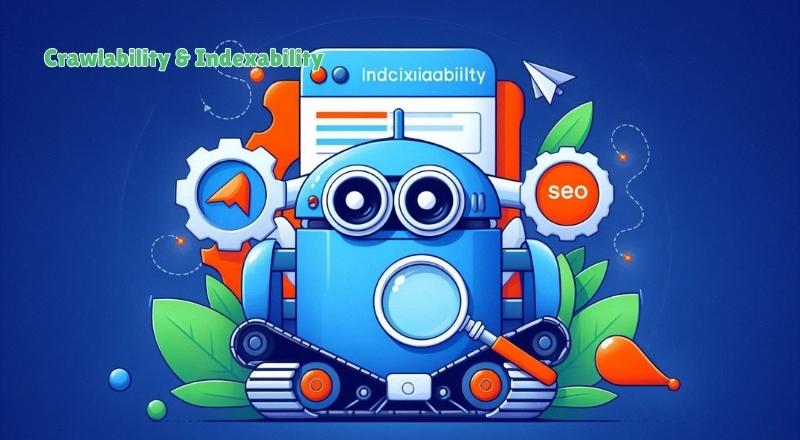
Ensuring search engine bots can effectively access and understand your content is fundamental to SEO.
- Ensuring Search Engine Bots Can Access and Understand Your Content: Crawlability refers to the ability of search engine bots (crawlers) to access and read the content on your web pages. Indexability refers to the ability of search engines to add your pages to their index, making them eligible to appear in search results.
Robots.txt File, Noindex Tags:
- Robots.txt file: This file instructs search engine crawlers which parts of your website they are allowed or not allowed to crawl. It’s crucial for managing crawl budget and preventing search engines from indexing pages you don’t want to appear in search results (e.g., admin pages, duplicate content).
- Noindex tags: These are meta tags placed in the HTML header of a web page that specifically tell search engines not to index that particular page, even if they crawl it. This is useful for pages like thank-you pages, internal search results pages, or development environments.
Measuring & Analyzing SEO Performance
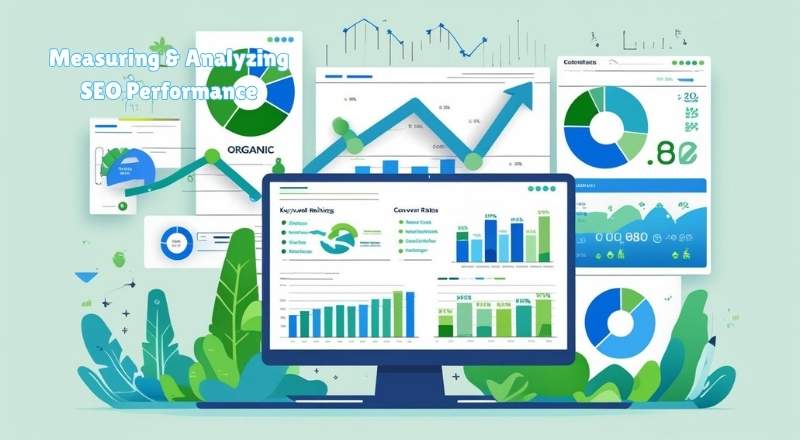
Key Performance Indicators (KPIs): To genuinely gauge an SEO strategy’s impact, it’s essential to monitor and evaluate a wide array of KPIs.
- Organic Traffic: This KPI tracks the number of visitors who land on your website via organic search results. Consistent growth in organic traffic indicates enhanced visibility and relevance within search engines.
Keyword Rankings:
Monitoring the position of your target keywords in search engine results pages (SERPs) directly reflects the success of your keyword targeting and optimization efforts. Improved search engine rankings typically increase organic website traffic.
- Bounce Rate: The percentage of visitors who exit your website after viewing only a single page. A high bounce rate can indicate that your content isn’t meeting user expectations or that the user experience is poor. A low bounce rate is a sign of intent guests.
- Time on Page: Also known as “average session duration” for a specific page, this KPI measures the amount of time users spend interacting with your content. Finishing more time on a page often means that the content is both interesting and valuable.
- Conversion Rates: Ultimately, SEO should contribute to business goals. Conversion rates measure the percentage of organic visitors who complete a desired action, such as making a purchase, filling out a form, or subscribing to a newsletter.
- Backlinks Acquired: Backlinks (links from other websites to yours) are a significant ranking factor. Tracking the number and quality of backlinks acquired indicates the authority and trustworthiness of your website in the eyes of search engines.
SEO Tools for Monitoring:

Effective SEO monitoring and analysis necessitate the use of specialized tools.
- Google Analytics: Google’s free web analytics service offers a clear understanding of website traffic, user behavior, demographics, and change tracking. Understanding the clarity and comprehension of user engagement on a website is key to achieving success.
- Google Search Console: It is a free Google that allows track your website’s performance in Google Search. It offers insights into search queries, impressions, clicks, and indexing status, and identifies any potential issues that could impact your site’s ranking.
- SEMrush: A comprehensive all-in-one SEO and marketing toolkit, SEMrush offers features for keyword research, competitor analysis, site auditing, backlink analysis, and more. This amazing tool is a must-have for an effective SEO strategy and implementation.
- Ahrefs: Similar to SEMrush, Ahrefs is a leading SEO tool known for its extensive backlink analysis capabilities, site explorer, keyword explorer, and content explorer. It excels in competitive intelligence and link building.
- Moz: Moz provides a suite of SEO tools, including Keyword Explorer, Link Explorer, and MozBar (a browser extension). It’s known for its domain authority and page authority metrics, which are useful for assessing website strength.
Iterative Improvement & Adaptation:
SEO is not a one-time task but an ongoing process that requires continuous refinement.
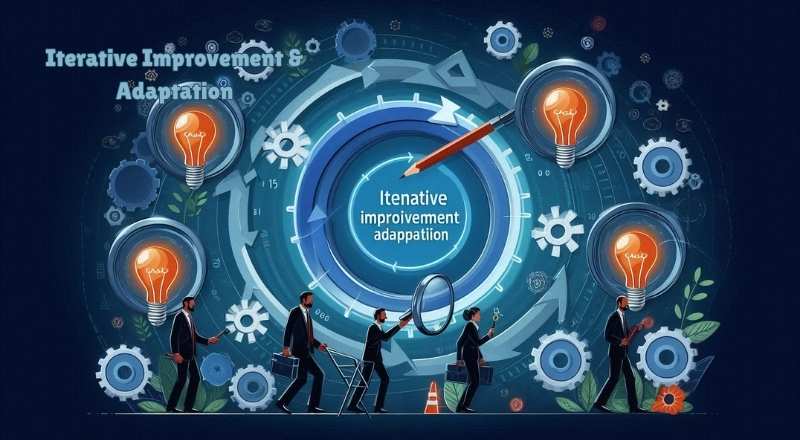
- Regularly Review Data and Make Adjustments: The digital landscape is dynamic, and search engine algorithms are constantly evolving. Regular analysis of SEO tool KPIs and insights is crucial for identifying areas for improvement. This might involve optimizing existing content, targeting new keywords, or improving technical SEO aspects.
- Stay Updated on Algorithm Changes: Google and other search engines frequently update their algorithms, which can impact rankings and visibility. Staying informed about these changes through industry news, official announcements, and SEO communities is vital for adapting your strategy.
- SEO is an Ongoing Process: Due to the competitive nature of online visibility and the continuous evolution of search engines, SEO requires consistent effort. It’s about establishing lasting authority and relevance instead of chasing quick solutions.
Future Trends in SEO for Communications

The field of SEO is constantly evolving, and communications professionals need to be aware of emerging trends to maintain and improve their online visibility.
Voice Search Optimization: As voice assistants and smart speakers become more prevalent, optimizing for voice search is increasingly important.
- Understanding Conversational Queries: Voice searches are typically more conversational and depend on natural language, unlike typed queries. SEO strategies need to account for this by focusing on answering direct questions and understanding user intent behind longer, more complex phrases.
- Optimizing for Long-Tail Keywords and Natural Language: Rather than using single keywords, voice search typically includes long-tail keywords or full sentences. Content should be structured to answer common questions explicitly, using natural language that mirrors how people speak.
AI & Machine Learning in Search:

Artificial intelligence and machine learning are playing an ever-larger role in how search engines understand and rank content.
- Impact of BERT, RankBrain, and Other AI Advancements: Algorithms like BERT (Bidirectional Encoder Representations from Transformers) and RankBrain enable Google. To better understand the nuances of language and user intent, even for ambiguous queries.
- Focus on Content Quality and User Intent: With AI at the helm, the emphasis is shifting more profoundly towards genuinely helpful, high-quality content that directly addresses user intent. Keyword stuffing and superficial content will be increasingly penalized.
E-A-T (Expertise, Authoritativeness, Trustworthiness): E-A-T is a core concept in Google’s Quality Rater Guidelines and is becoming increasingly important for all websites, especially those in sensitive industries.
- Building Credibility and Demonstrating Expertise: Websites need to demonstrate that their content is created by experts in their field. This can be achieved through author bios, credentials, external citations, and a strong online reputation.
- Crucial for YMYL (Your Money Your Life) Topics: For “Your Money Your Life” topics (e.g., finance, health, legal advice), where inaccurate information could significantly impact a user’s well-being, E-A-T is critical. Search engines focus on highlighting authoritative and reliable sources for these topics.
Video SEO:

Video content continues to dominate online consumption, making video SEO a vital component of any comprehensive strategy.
- Optimizing Video Content for Search Engines (YouTube, Google Video): Beyond just YouTube, videos are increasingly appearing directly in Google search results. Optimizing video titles, descriptions, tags, and thumbnails is essential for discoverability.
- Transcripts, Descriptions, Titles: Providing accurate transcripts not only improves accessibility. But also gives search engines more textual content to understand the video’s context. Well-written, keyword-rich descriptions and compelling titles are equally important for attracting viewers.
Local SEO for Communications:
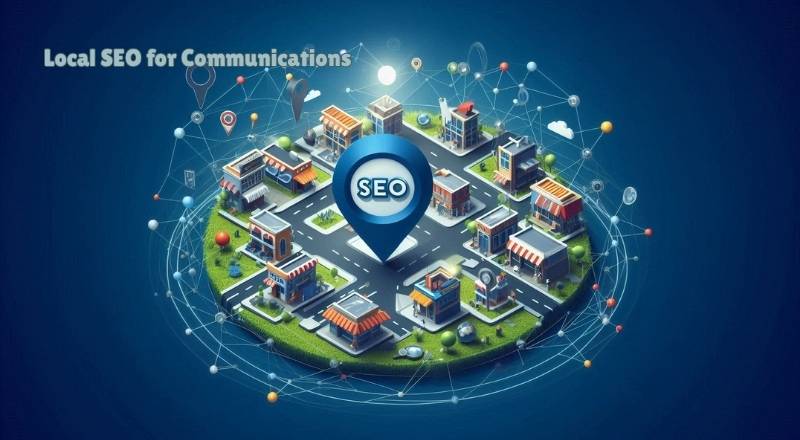
For businesses and organizations with a physical presence, local SEO is crucial for attracting nearby customers.
- Google My Business Optimization: A fully optimized Google My Business profile is the cornerstone of local SEO. It features accurate business details, photos, customer feedback, and frequent updates.
- Local Citations and Reviews: Consistent business listings across various online directories (local citations) and a strong volume of positive customer reviews significantly boost local search visibility and trust.
Conclusion:
Integrating SEO into Your Communications Strategy
SEO, often perceived as a purely technical discipline, is, in fact, a foundational pillar of any successful modern communications strategy. It’s far more than just keywords and algorithms; it’s about understanding your audience, crafting compelling narratives, and ensuring those narratives reach the right people at the right time.
By effectively integrating strong SEO strategies with your overall communication goals, your organization can reap numerous advantages. This strategic integration is crucial for:
Significantly Boosting Organic Traffic: Optimized content ranks higher, attracting organic traffic interested in your offerings.
Enhancing Visibility and Discoverability: In the vast digital world, effective SEO boosts brand visibility and recall by helping your target audience find you amidst competitors.
Building a Stronger, More Impactful Brand Presence Online: SEO drives traffic and builds authority. High rankings signal reliability and trustworthiness to search engines and users, fostering trust and loyalty. Quality content demonstrates expertise, solidifying your brand’s reputation.
The ever-changing digital landscape demands continuous learning and adaptation for SEO success. Staying updated on trends, algorithm changes, and best practices is crucial. Integrating SEO into your communications strategy is essential for sustained growth and impactful digital engagement.
Visit and support our page Google Ranking First page
